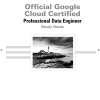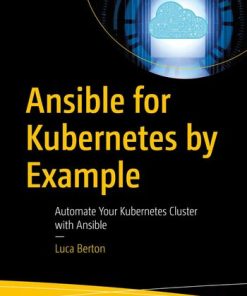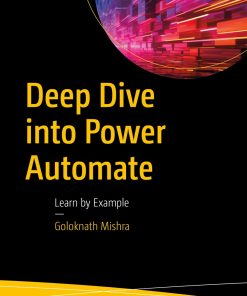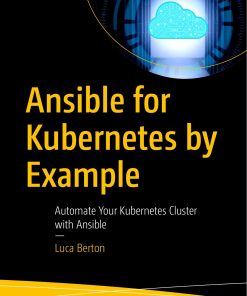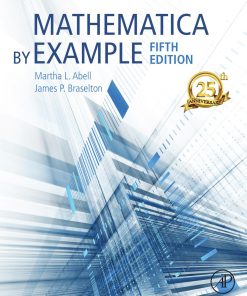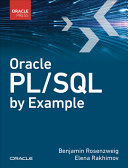(Ebook PDF) Your Wish Is My Command Programming by Example 1st edition by Henry Lieberman 0080521452 9781558606883 9780080521459 full chapters
$50.00 Original price was: $50.00.$25.00Current price is: $25.00.
Your Wish Is My Command: Programming by Example 1st edition by Henry Lieberman – Ebook PDF Instant Download/DeliveryISBN: 0080521452, 9781558606883, 9780080521459
Full download Your Wish Is My Command: Programming by Example 1st edition after payment
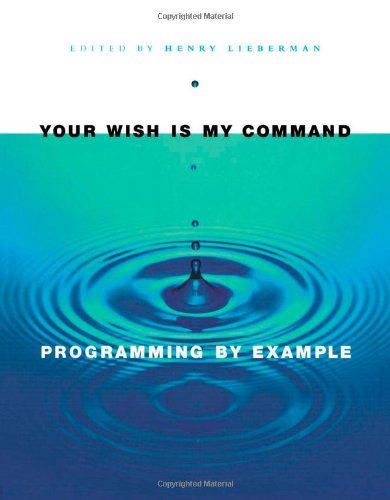
Product details:
ISBN-10 : 0080521452
ISBN-13 : 9780080521459, 9781558606883
Author: Henry Lieberman
As user interface designers, software developers, and yes-as users, we all know the frustration that comes with using “one size fits all” software from off the shelf. Repeating the same commands over and over again, putting up with an unfriendly graphical interface, being unable to program a new application that you thought of yourself-these are all common complaints. The inflexibility of today’s computer interfaces makes many people feel like they are slaves to their computers. Shouldn’t it be the other way around? Why can’t technology give us more “custom-fitting” software?
Your Wish Is My Command: Programming by Example 1st Table of contents:
Chapter 1. Novice Programming Comes of Age
Abstract
1.1 Introduction
1.2 Programming without a Textual Programming Language
1.3 Theoretical Foundations
1.4 Empirical Evidence
1.5 Conclusion
References
Chapter 2. Generalizing by Removing Detail: How Any Program Can Be Created by Working with Examples
Abstract
2.1 Introduction
2.2 A Brief Introduction to ToonTalk
2.3 An Example of Programming by Example
2.4 Discussion
2.5 Conclusion
Acknowledgements
References
Chapter 3. Demonstrational Interfaces: Sometimes You Need a Little Intelligence, Sometimes You Need
Abstract
3.1 Introduction
3.2 Our Demonstrational Systems
3.3 Level of Intelligence
3.4 Feedback
3.5 Conclusion
Acknowledgements
References
Chapter 4. Web Browsing by Example
Abstract
4.1 Introduction
4.2 Underlying Problems of PBE
4.3 Web Browsing: Good Domain for PBE
4.4 Internet Scrapbook
4.5 SmallBrowse: Web-Browsing Interface for Small-Screen Computers
4.6 Discussion
4.7 Conclusion
Appendix: Copying HTML Data from Web Browser to Scrapbook
References
Chapter 5. Trainable Information Agents for the Web
Abstract
5.1 Introduction
5.2 An Application Scenario
5.3 The HyQL Query Language
5.4 The Training Dialogue
5.5 Lessons Learned
5.6 The Communication Problem
5.7 Another Application Scenario
5.8 Related Work (Non-PBE)
5.9 Conclusion
Acknowledgements
References
Chapter 6. End Users and GIS: A Demonstration Is Worth a Thousand Words
Abstract
6.1 Introduction
6.2 A Story of End Users and GIS
6.3 Why Is GIS Software So Hard to Use?
6.4 Are Things Improving for GIS Users?
6.5 How Can Programming by Demonstration Help?
6.6 A Programming-by-Demonstration Approach for GIS: C-SPRL
6.7 Conclusion
Acknowledgements
References
Chapter 7. Bringing Programming by Demonstration to CAD Users
Abstract
7.1 Introduction
7.2 PBD and CAD
7.3 Toward a Complete Solution
7.4 True Explicit PBD Solutions
7.5 Conclusion
References
Chapter 8. Demonstrating the Hidden Features that Make an Application Work
Abstract
8.1 Introduction
8.2 The Perils of Plain Demonstration
8.3 Who Is Actually Programming?
8.4 Giving the System Hints
8.5 The Programming Environment Matters
8.6 Conclusion
References
Chapter 9. A Reporting Tool Using Programming by Example for Format Designation
Abstract
9.1 Introduction
9.2 System Overview
9.3 User Interface of Format Editor
9.4 Extracting Formatting Rules
9.5 Generating Reports
9.6 Example of the Process
9.7 Evaluation
9.8 Conclusion
References
Chapter 10. Composition by Example
Abstract
10.1 Introduction
10.2 PBE-Based Text Editing Systems
10.3 Dynamic Macro: A PBE-Based Text Editing System
10.4 POBox: A PBE-Based Text Input System
10.5 Conclusion
References
Chapter 11. Learning Repetitive Text-Editing Procedures with SMARTedit
Abstract
11.1 Introduction
11.2 The SMARTedit User Interface
11.3 The Smarts behind SMARTedit
11.4 Choosing the Most Likely Action
11.5 Making SMARTedit a More Intelligent Student
11.6 Other Directions for SMARTedit
11.7 Comparison with Other Text-Editing PBD Systems
11.8 Conclusion
References
Chapter 12. Training Agents to Recognize Text by Example
Abstract
12.1 Text Recognition Agents
12.2 Writing Conventional Grammars as Text
12.3 Programming Grammars by Example for More Accessibility
12.4 Grammex: A Demonstrational Interface for Grammar Definition
12.5 An Example: Defining a Grammar for Email Addresses
12.6 Rule Definitions from Multiple Examples
12.7 Future Work: Using Grammar Induction to Speed Up the Definition Process
12.8 Related Work
12.9 Conclusion
Acknowledgements
References
Chapter 13. SWYN: A Visual Representation for Regular Expressions
Abstract
13.1 Introduction
13.2 Other PBE Systems for Inferring Regular Expressions
13.3 A User Interface for Creating Regular Expressions from Examples
13.4 A Heuristic Algorithm for Regular Expression Inference
13.5 A Visual Notation for Regular Expressions
13.6 An Integrated Facility for Regular Expression Creation
13.7 Conclusion
Acknowledgements
References
Chapter 14. Learning Users’ Habits to Automate Repetitive Tasks
Abstract
14.1 Introduction
14.2 Overview of APE
14.3 Illustrative Examples
14.4 Detecting Repetitive Tasks
14.5 Learning a User’s Habits
14.6 Use and Experimental Results
14.7 Conclusion
References
Chapter 15. Domain-Independent Programming by Demonstration in Existing Applications
Abstract
15.1 Introduction
15.2 What Familiar Does
15.3 Platform Requirements
15.4 AppleScript: A Commercial Platform
15.5 Conclusion
References
Chapter 16. Stimulus-Response PBD: Demonstrating “When” as well as “What”
Abstract
16.1 Introduction
16.2 The Syntax of Stimulus-Response
16.3 The Semantics of Stimulus-Response
16.4 Feedback and Editing
16.5 Conclusion
References
Chapter 17. Pavlov: Where PBD Meets Macromedia’s Director
Abstract
17.1 Introduction
17.2 Example
17.3 Objects that React Asynchronously to Events
17.4 Conclusion
References
Chapter 18. Programming by Analogous Examples
Abstract
18.1 Introduction
18.2 The GUI to Program Chasm
18.3 Programming by Analogous Examples
18.4 Discussion
18.5 Conclusion
Acknowledgements
References
Chapter 19. Visual Generalization in Programming by Example
Abstract
19.1 If You Can See It, You Should Be Able to Program It
19.2 What Does Visual Generalization Buy Us?
19.3 Low-Level Visual Generalization
19.4 High-Level Visual Generalization
19.5 Introducing Novel Generalizations: Generalizing on Grids
19.6 Conclusion
People also search for Your Wish Is My Command: Programming by Example 1st:
your wish is my command meaning
say the word your wish is my command
listen baby your wish is my command
your wish is my command gif
how to respond to your wish is my command
Tags:
Your Wish,My Command,Programming,Example,Henry Lieberman
You may also like…
Computers - Applications & Software
Ansible for Kubernetes by Example: Automate Your Kubernetes Cluster with Ansible 1st Edition
Romance - Military Romance
Mathematics - Operator Theory
Computers & Technology
Computers - Enterprise Computing Systems
Uncategorized
Computers & Technology
Uncategorized


